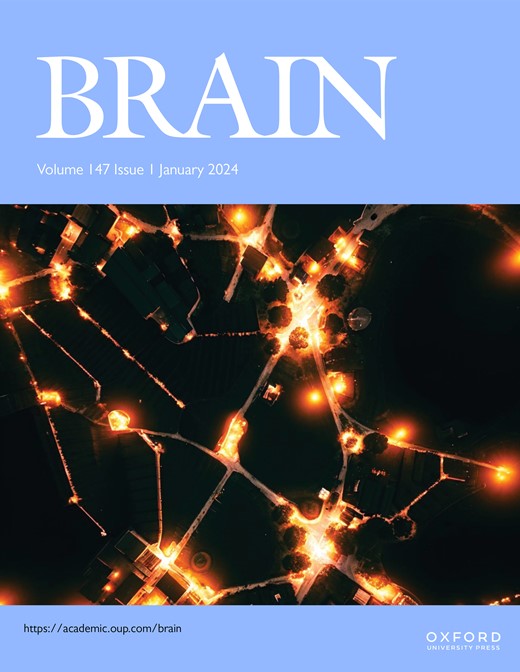星形胶质细胞 Kir4.1 离子通道缺陷导致男性面部持续性炎症性疼痛
IF 10.6
1区 医学
Q1 CLINICAL NEUROLOGY
引用次数: 0
摘要
慢性面部疼痛是一种常见的致残症状,由中枢致敏维持,导致疼痛超敏。虽然已经确定反应性星形胶质细胞在持续性疼痛机制中起关键作用,但星形胶质细胞维持神经元稳态的正常能力被破坏的作用却鲜为人知。本研究表明,持续的面部炎症会扰乱雄性大鼠髓背角的钾稳态,这是由于性别特异性的星形胶质内向纠偏钾Kir4.1通道的急剧下调。使用选择性遗传工具,我们确定这种下调,可能是由于炎症过程中IL-1β的释放,是足够的,并且需要通过改变K+基线水平来驱动疼痛过敏。我们进一步表明,这一系列事件可以通过选择性上调星形胶质细胞Kir4.1或通过全身给药5-氮杂胞苷(一种DNA甲基化调节剂)来预防。因此,我们的研究结果揭示了星形胶质细胞功能障碍驱动男性持续炎性面部疼痛的关键机制,并发现了靶向中枢Kir4.1治疗这种疾病的治疗潜力。本文章由计算机程序翻译,如有差异,请以英文原文为准。
Astrocytic Kir4.1 ion channel deficit drives persistent inflammatory facial pain in males
Chronic facial pain, a frequent and disabling condition, is maintained by central sensitization, which results in pain hypersensitivity. Although it is well established that reactive astrocytes play a key role in persistent pain mechanisms, the role of disruption of the normal capacity of astrocytes to maintain neuronal homeostasis is much less known. Here we show that persistent facial inflammation disturbs potassium homeostasis in the medullary dorsal horn of male rats, due to a sex-specific, drastic downregulation of astroglial inward rectifier potassium Kir4.1 channels. Using selective genetic tools, we establish that such downregulation, likely due to the release of IL-1β during inflammatory processing, is sufficient and required to drive pain hypersensitivity through altered K+ baseline levels. We further show that this chain of events can be prevented by selective upregulation of astroglial Kir4.1, or through systemic administration of 5-azacytidine, a DNA methylation modulator. Our results thus reveal a critical mechanism by which astrocyte dysfunction drives persistent inflammatory facial pain in males and discover the therapeutic potential of targeting central Kir4.1 for treating this disease.
求助全文
通过发布文献求助,成功后即可免费获取论文全文。
去求助
来源期刊

Brain
医学-临床神经学
CiteScore
20.30
自引率
4.10%
发文量
458
审稿时长
3-6 weeks
期刊介绍:
Brain, a journal focused on clinical neurology and translational neuroscience, has been publishing landmark papers since 1878. The journal aims to expand its scope by including studies that shed light on disease mechanisms and conducting innovative clinical trials for brain disorders. With a wide range of topics covered, the Editorial Board represents the international readership and diverse coverage of the journal. Accepted articles are promptly posted online, typically within a few weeks of acceptance. As of 2022, Brain holds an impressive impact factor of 14.5, according to the Journal Citation Reports.
 求助内容:
求助内容: 应助结果提醒方式:
应助结果提醒方式:


